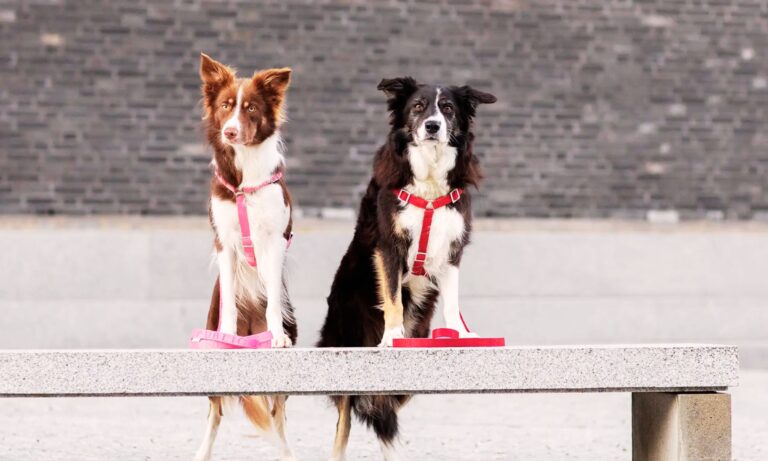| Summary: At 6 months old, a Pitbull puppy is nearing adolescence and shows significant growth. Males typically weigh 25–40 lbs (11–18 kg), while females range from 20–35 lbs (9–16 kg). Height at this stage is around 14–17 inches (35–43 cm). Growth pace begins to slow after this age. |
Pit Bulls are known for their muscular build, strength, and loyalty. As one of the most popular dog breeds in the world, they are loved for their affectionate nature and protective instincts. If you’re a Pit Bull owner or prospective dog parent, understanding the growth trajectory of your puppy is essential. This guide focuses specifically on a 6 month old pitbull puppy size, offering detailed insights into what to expect in terms of size, weight, growth milestones, and factors influencing their development.
Understanding the growth patterns of a 6-month-old Pit Bull can help you provide proper nutrition, exercise, and care, ensuring your dog grows into a healthy, happy adult. By knowing what to expect at this stage of development, you can track your dog’s progress and make adjustments as needed.
The American Staffordshire Terrier’s coat type is short, sleek, and easy to maintain with regular brushing.
Blog Highlights
TogglePit Bull Growth Overview
Pit Bulls typically undergo rapid growth during their first year of life. Between birth and 6 months, a Pit Bull puppy experiences significant changes, especially in size, weight, and muscle development. At 6 months old, Pit Bulls are in the midst of their adolescent growth stage. They are growing quickly but still have a lot of maturing left before they reach their full adult size.

This period is crucial for setting the foundation of your dog’s health. The 6-month mark is when many Pit Bulls start to develop the strength and agility they are known for. However, it’s also a time when they can experience some growing pains or behavioral changes, as they begin to transition from puppyhood to adolescence.
Pit Bull Size and Weight at 6 Months
At 6 months old, your Pit Bull will still be in the process of developing its muscle structure, height, and weight. Growth tends to slow down after this point, but significant changes will continue to occur over the next year. Here’s what to expect in terms of size and weight:

| Age | Weight (Male) | Weight (Female) | Height (Male) | Height (Female) |
| 6 Months | 25 – 35 pounds | 22 – 30 pounds | 14 – 16 inches | 14 – 16 inches |
Weight Expectations at 6 Months
A 6-month-old Pit Bull puppy’s weight can vary based on a number of factors, including genetics, diet, and exercise. At this stage, male Pit Bulls typically weigh between 25 and 35 pounds, while females tend to weigh slightly less, around 22 to 30 pounds.

It’s important to note that there will be some variance depending on the specific bloodline of the Pit Bull. Some bloodlines of American Pit Bull Terriers, for example, may produce puppies that are larger or smaller than the average.
By 6 months old, most Pit Bulls will have already gained around 40-50% of their adult body weight. Their weight gain during this period is a combination of muscle development, fat accumulation, and bone growth.
Height Expectations at 6 Months
When it comes to height, 6-month-old male Pit Bulls will stand between 14 and 16 inches tall at the shoulder, while females are typically 1-2 inches shorter, reaching about 14 to 16 inches in height.

By this stage, the Pit Bull’s body will start to take on a more athletic, muscular build. However, it’s important to understand that a 6-month-old Pit Bull still has some growing to do, especially in terms of their height and muscle mass. Full growth is generally achieved between 1 and 2 years of age, with males typically being slightly taller and heavier than females.
The best collar size for an American Staffordshire Terrier ensures a comfortable and secure fit for your dog during walks and training.
Factors Affecting Growth and 6 Month Old PitBull Puppy Size

While there are general growth expectations, several factors can influence the size of your 6-month-old Pit Bull. It’s important to understand these factors to ensure your dog reaches its full growth potential and remains healthy throughout its development.
1. Genetics
Genetics is one of the most significant factors affecting the size and weight of a Pit Bull. The breed’s bloodline will often determine how big the dog will grow. Some Pit Bulls, particularly those from working or show lines, may be larger or have more defined muscle structure than others.
For example, Pit Bulls from show dog bloodlines may be bred for size and muscular build, leading to puppies that grow larger than others. On the other hand, working Pit Bulls may be bred for agility and stamina, which can result in a leaner physique.
2. Nutrition
Proper nutrition is key to a 6-month-old Pit Bull’s growth. Puppies at this age need a diet rich in protein, fats, and other essential nutrients to support their rapid growth and muscle development. High-quality dog food formulated for large-breed puppies is recommended, as it ensures they get the right balance of nutrients for their growing bodies.
Feeding a Pit Bull puppy too much or too little can lead to growth issues. Overfeeding can result in obesity and joint problems, while underfeeding can cause slow growth and muscle weakness. It’s important to follow a feeding schedule and provide the appropriate portion sizes based on your dog’s weight and activity level.
3. Exercise
Exercise is another critical factor in your Pit Bull’s growth at 6 months. While puppies at this age should not engage in high-impact activities that could harm their developing joints, regular moderate exercise is essential for building muscle and bone strength.
Proper exercise will help your Pit Bull stay lean and muscular, promoting a healthy weight and preventing obesity. Activities like short walks, gentle playtime, and basic training exercises can keep your 6-month-old Pit Bull active without straining its developing body.
4. Health
The health of your Pit Bull is integral to its growth. Puppies who experience health issues, such as nutritional deficiencies, parasites, or injuries, may not reach their full growth potential. Regular vet check-ups are crucial during this stage of development to ensure your Pit Bull remains on track in terms of size and overall health.
Certain health conditions, such as hip dysplasia or growth hormone imbalances, can also affect a Pit Bull’s growth. Regular vaccinations, parasite control, and preventive care are essential for your puppy’s well-being and growth.
To find out the what size collar for an Affenpinscher, ensure you measure your dog’s neck correctly for a perfect fit.
What to Expect in Terms of Behavior and Development at 6 Months
At 6 months old, your Pit Bull puppy is transitioning from puppyhood into adolescence. This is a stage where you may notice behavioral changes, including increased energy, curiosity, and even some challenges with obedience.
1. Increased Energy and Playfulness
As a 6-month-old, your Pit Bull is still full of energy and will require plenty of exercise to burn off its excess energy. This age is a critical time to instill good behavior through training and positive reinforcement. Be prepared for playful behavior, which is essential for their physical and mental development.
2. Socialization
Pit Bull puppies should be socialized early to ensure they grow into well-adjusted adults. At 6 months old, socialization is still crucial. Exposing your Pit Bull to different environments, people, and other dogs will help them develop into confident and friendly dogs. Lack of proper socialization can lead to anxiety and behavioral problems later in life.
3. Training and Obedience
At this age, your Pit Bull is capable of understanding basic commands, such as sit, stay, and come. Obedience training should be consistent and positive, with treats and praise used to reinforce good behavior. At 6 months, your Pit Bull may become a bit more independent and challenging, but with patience and persistence, you can help them learn the rules of the household.
For a step-by-step guide on how to wear collar to an Affenpinscher, check out this detailed article to ensure a comfortable and secure fit for your dog.
Male vs. Female Pit Bulls at 6 Months
While both male and female Pit Bulls develop similarly during their first 6 months, there are some differences worth noting. In general, males are slightly larger and more muscular than females, though the variation isn’t as pronounced at 6 months.
- Male Pit Bulls: Typically weigh between 25 to 35 pounds and stand around 14 to 16 inches tall at 6 months. Males tend to develop a broader chest and thicker neck, giving them a more solid build.
- Female Pit Bulls: Generally weigh between 22 to 30 pounds and stand around 14 to 16 inches tall. Females are usually leaner and more agile, though they still possess the strength and athleticism typical of the breed.
Conclusion
At 6 Month Old PitBull Puppy Size, your Pit Bull is still in the midst of its growth phase. While there are general expectations for weight, height, and overall development, it’s important to keep in mind that each dog is unique, and factors such as genetics, nutrition, exercise, and health all play a significant role in how your Pit Bull will grow.
Check out the best dog collars for Border Collie to find durable, stylish, and comfortable options for your active dog.
Tracking your Pit Bull’s size and milestones will help you ensure they are developing at a healthy rate, allowing you to provide the necessary care and attention for a happy, strong, and well-adjusted dog. With proper nutrition, exercise, and medical care, your 6-month-old Pit Bull will continue to grow into a loyal, muscular companion.





